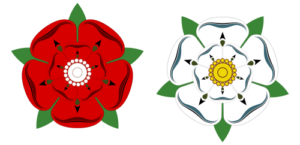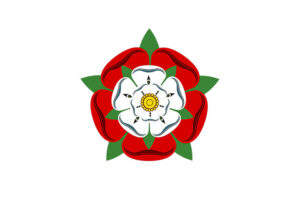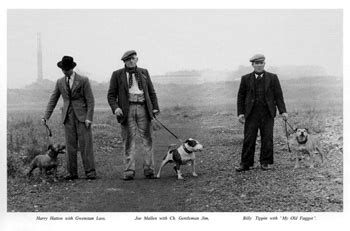The Tudor Rose
by Lynn Caswell, Wavemaker Staffords, The Stafford Knot, Inc. 501(c )(3)


The Tudor rose is, of course, the most poignant symbol, and graphic propaganda as well, of the Tudor dynasty and what it stood for. The visuals are very well-known – the red rose and the white rose together. But what does it actually stand for and what is the significance of it?
A rose with red and white petals is the Tudor dynasty’s heraldic emblem (1485-1603). In the XV-XVI centuries symbols and emblems were very popular. Every English nobleman used one or few images as some kind of identification mark. Heraldic emblems used to adorn almost everything, ranging from nobleman’s personal banner to his housewares. Every wedded pair had his personal sign combining marrieds’ symbols. That’s exactly the way the Tudor rose appeared. In 1486 the founder of the House of Tudor, Henry VII, married king Eduard IV’s daughter (1461-1470; 1471-1483). Tudors traced their genealogy to the House of Lancaster. The latter had a red rose as his symbol. Eduard IV’s favorite emblem was also a rose, but a white one. Red-and-white rose signified a union between Henry VII and Elisabeth of York.
It has been suggested that the red rose “probably owes its popular usage to Henry VII quickly responding to the pre-existing Yorkist white rose in an age when signs and symbols could speak louder than words”. What this means is that it was believed the red rose was never really the symbol of the Lancastrian cause, but that Henry VII made it so because he wanted a symbol that represented the union of the houses. Personally, I do not believe this. I think that the red rose was the defining symbol of the House of Lancaster in order to contrast with the white rose of York. The red rose is now the symbol of Lancashire as a whole. The colour red implies danger, blood and battle. There certainly were battles, as Henry V won at Agincourt, and Henry VI lost his throne at the Battle of Towton.
The white rose is a different story. It was used to contrast with the red rose of the House of Lancaster in order to clearly define the two sides. It was definitely in use during the fifteenth century, even if the red rose was not. The white rose has since been adopted as the symbol for the whole of Yorkshire.
When Richard III was killed at the Battle of Bosworth Field, Henry Tudor took the throne as Henry VII. He was the Lancastrian heir at the time, and he married Elizabeth of York, daughter of Edward IV and Elizabeth Woodville. This ended the Wars of the Roses by uniting the two houses, and the two symbols were merged to create the iconic emblem of the House of Tudor.
The Red Rose of Lancaster and the White Rose of York, are combined to create the iconic Tudor Rose.
The combination of the red and white represents unity and mutual regard. It was supposed to demonstrate that England was united and that civil war was over. The Tudor rose was carved onto buildings and liveries in order to demonstrate their loyalty to the crown.
It is worth studying the history of the Tudor rose at least to understand that there are so much politics and so surprisingly little truth about it. Firstly, the White and the Red Roses were not the common symbols of the House of Yorks and the House of Lancaster, they were used just from time to time along with the others. Secondly, the idea underlying the Wars of the Roses is very far from being true. At that time people were not thinking about the period from 1450 to 1480th as of the confrontation between two Roses. Probably they did not even know that they were living during the period of a civil war. Plenty of frightening details were just invented by the court propagandists in order to support the reputation of the new dynasty. In the course of time, the legend of the War of the Roses has accumulated more and more details. Shakespeare has created the scene in which the House of Yorks has chosen the White rose as their symbol, while the Red was chosen by the House of Lancaster and both have sworn to hold these flowers ’till the death. The expression “War of the Roses” has appeared much later – in the 19th century. And it’s interesting to know that it has been spread not by a historian but by a writer – famous Walter Schott.
I am designing, with another artist, the graphics package for the SBTCA 50th Anniversary Jubilee Weekend celebration – We have chosen this iconic symbol to represent the much needed ‘coming together’ required in order to make possible what a clubs purpose is: “To Promote, Preserve, Protect” the Staffordshire Bull terrier in unison, as a strong group of enthusiasts who must work together to achieve this goal and to respect our history and traditions of the Stafford.


The Stafford Knot, Inc. 501 (c )(3) is a proud sponsor for the Staffordshire Bull Terrier Club of America's upcoming 50th Anniversary Jubilee Specialty Weekend. Please join us on FB https://www.facebook.com/groups/1620994418167946 on the fund raising group to help us support this historic event.
